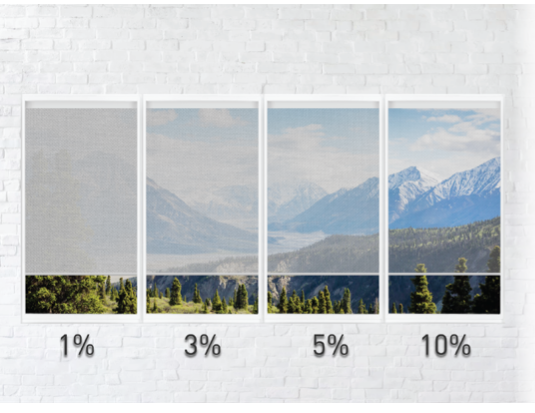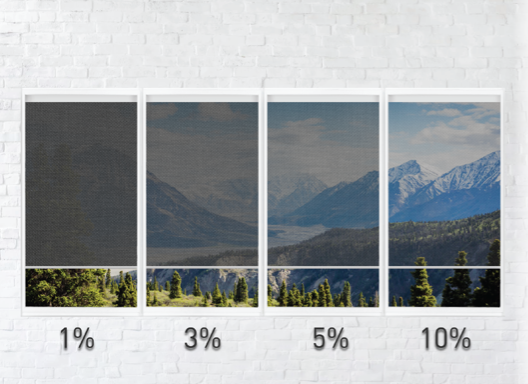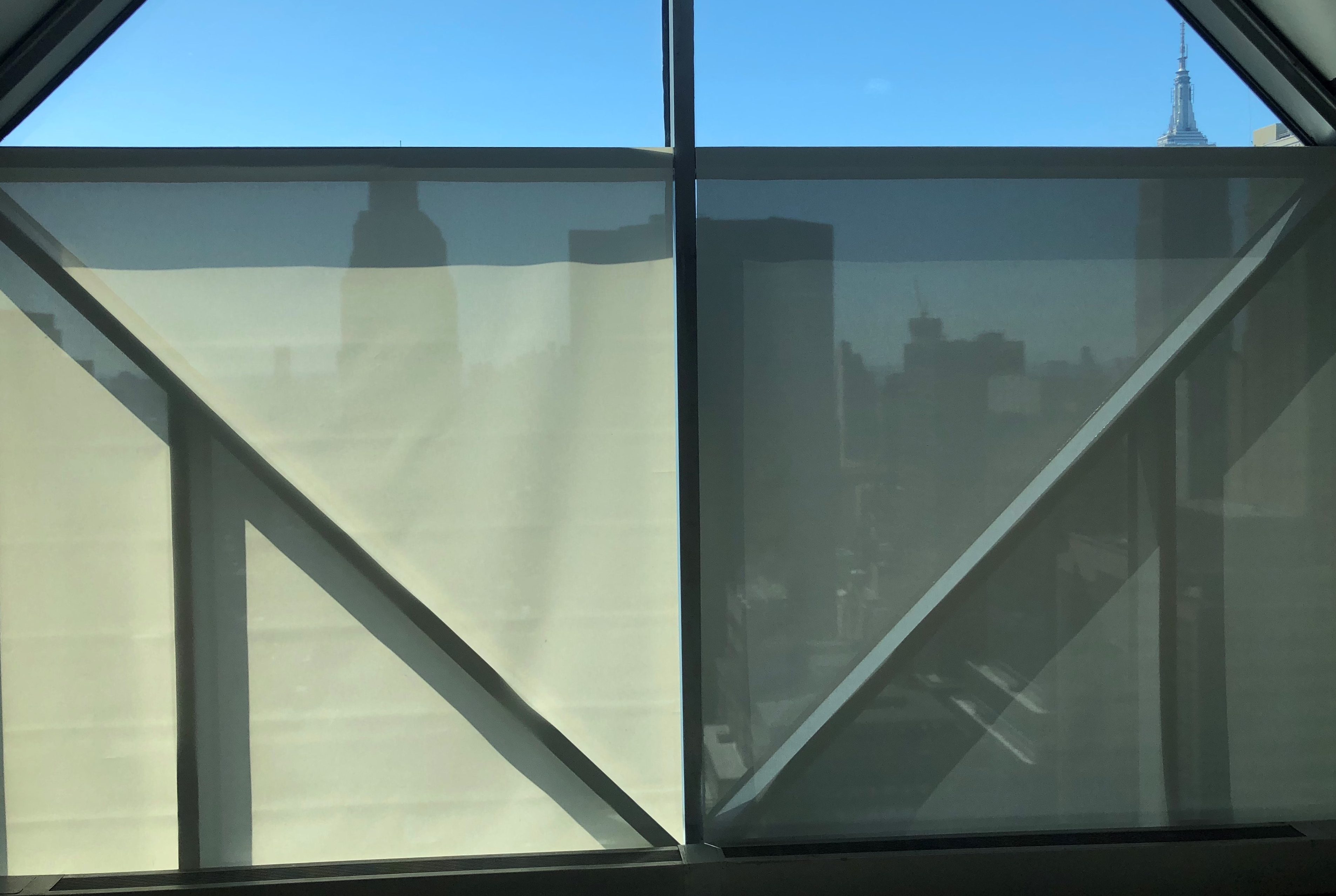Fabric Guide for Window Treatments
Openness factors are key when choosing the right fabric for your next project. These numerical percentages dictate the amount of light that filters through the fabric, and the level of transparency and privacy.
Standard openness factors are 1%, 3%, 5%, & 10%. Essentially, the higher the openness factor, the more light that enters the room, the less privacy, and the more transparency. The lower the openness factor, the less light that enters the room, the more privacy & UV protection, and the less transparency. If controlling temperature and saving energy is your priority, then low openness factors are the best solution for you.
View through is another key feature when considering the shade fabric that is best for you. Picture the New York City skyline, if you’d like to be able to enjoy the view from your office, even with the window shades down, then it’s important to consider the color as well as the type of shade fabric.
Below are two examples showcasing the importance of color selection. These fabrics have the same openness factor, however one is a light colored fabric, and the other is a darker shade.
Light Sol-R-Shade Fabric

-
Reflects and reduces heat absorption.
-
Preserves natural levels of light.
-
Higher R-value for better insulation.
-
Can help reduce the cost of cooling.
Dark Sol-R-Shade Fabric

-
Excellent glare control.
-
Improved transparency during daylight.
-
Dark fabric tends to show less dirt.
G10 & G10-A

G10 (on the left) is our most versatile shade fabric, as it’s available in a variety of colors and in 1%, 3%, 5%, & 10% openness factors. Depending on the needs, clients have the ability to use multiple openness factors per project. Additionally, G10 ensures solar protection without compromising aesthetics.
While there is definite visibility with G10, our latest fabric G10-A (on the right) provides even more view through. G10-A has a metalized backing, reflecting sunlight away from buildings.
Pair G10 with G10-A for maximum benefits.
Additional Key Terms
Shading Coefficient
Represents the relative percentage of solar heat through a combination of glass and specific shade cloth.
-
A shading coefficient equals lower heat gain
-
Light colors have lower shading coefficients than dark colors
Solar Optical Properties
The properties of Sol-R-Control fabrics are used to calculate the combination of any glass and shade fabric.
-
Ts – Total Solar Transmittance
-
As – Total Solar Absorption
-
Rs – Total Solar Reflectance
-
Tv – Visible Light Transmittance

